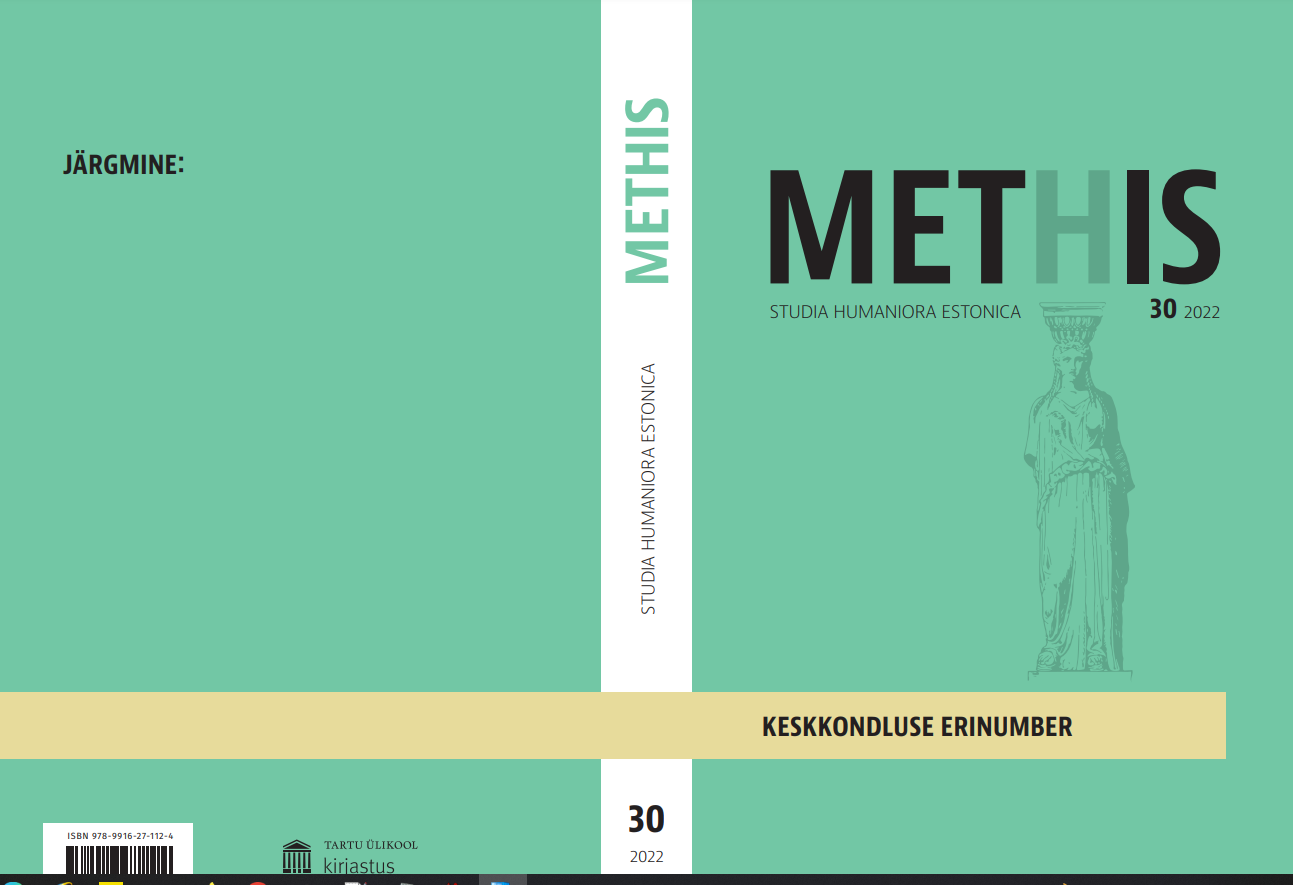Põrkuvad „ilmamaad“ 17. sajandi Liivimaal / Clashing “Weatherlands” in 17th-century Livonia
DOI:
https://doi.org/10.7592/methis.v24i30.22101Keywords:
varauusaeg, religioosne kirjandus, kliima, mäss, ilm, Early modern times, religious literature, climate, weather, upriseAbstract
Johannes Gutslaffi 1644. aastal ilmunud teos „Lühike teade ja õpetus“ ja selles sisalduv „pikse palve“ kuuluvad Eesti varauusaegsete tüvitekstide hulka. Lugedes seda keskkonnahumanitaaria vaatenurgast, saavad ilmsiks seni tähelepanuta jäänud kliimaajaloolised kihistused ja seosed. Artikkel väidab, et „Lühike teade ja õpetus“ on üks varasemaid siinmail ilmunud teoloogilisi käsitlusi ekstreemsetest ilmastikutingimustest 17. sajandil. Raamatus on kirjeldatud esimest teadaolevat ilmastikutingimustest põhjustatud mässu Balti ajaloos. Artikkel pakub seega esimesi tõlgendusi Balti nn „ilmamaade“ sügavamatest kihtidest ning analüüsib „kliimamässu“ tekkimise probleeme, kasutades selleks keskkonnahumanitaaria ja kliimaajaloo metoodikat.
Summary
Johannes Gutslaff’s Kurtzer Bericht und Unterricht Von der Falsch-heilig genandten Bäche in Lieffland Wöhhanda ('Short Report and Lesson on the Võhandu River, Wrongly Regarded as Sacred in Livonia') that was printed in 1644, and the “Thunder prayer” included in it belong to the main corpus of Early Modern texts in Estonia. Hitherto, this material has been interpreted mostly from the perspective of cultural history. Reading the text from an environmental humanities perspective, we claim that so far unrecognised layers and connections to climate history can be found in it: the book and can be read as a scholarly piece about changing climate conditions and their different interpretations.
Kurtzer Bericht belongs among Baltic theological reflections written in German about the extreme weather in the 17th century, which was marked globally by rapidly worsening climatic conditions and social unrest caused by these. In Gutslaff’s book we can also find a detailed description of the first climate-caused uprising in Baltic history known so far. In the Early Modern period, or during the peak of the “Little Ice Age”, the Baltic region, similarly to the rest of the world, was affected by a wider trend of cooling, with extreme fluctuations of temperature and precipitation proving to be the biggest problem for peasants growing crops. A look at climate history, however, makes it clear that cultural or social reactions need not be linked to particularly extreme weather phenomena, as they can culminate and explode at a favourable later moment. Climate does not dictate cultural behaviour, but the latter’s interweaving with climate needs to be studied more broadly on the basis of the existing regional sources.
When looking for traces concerning climate in Baltic German religious literature, we can contextualise Gutslaff’s text as belonging to Early Modern “weatherlands” (Tim Ingold) that transgress cultural and regional borders. The article offers first interpretations of the clashing Baltic early modern “weatherlands”, combining methods deriving from literary scholarship, environmental humanities and climate history. The interconnectedness of climate and culture makes it possible to see the challenges climate change poses to culture and social order. Thus weather can be a mirror of relationships and a “moral barometer” of society that can measure not only the state of relations between God and people or society, but also the tensions between people. According to such an interpretation, weather plays almost as significant a role in religious thinking as do measuring instruments in secular science. As weather phenomena are loaded with different societal and religious meanings, explosive conflicts can emerge in climatically extreme times, showing the tension between different layers of society. Conflicts around weather and climate can therefore be seen as inevitable in periods of climatic challenges.
Johann Gutslaff's Kurzer Bericht is placed among the theological-meteorological literature that had spread across Europe and can be traced back to the Antiquity and the Bible. As phenomena related to vernacular religion are of a cross-ethnic nature and with migratory motivations, it is no wonder that the rebellion by the Võhandu was not limited to ethnically Estonian peasants, but linked representatives of different linguistic and social layers. It can be noticed that in interpreting the events Gutslaff attempted to attribute the power and competence to change the weather only to God, and the ability to react to the weather changes only to upper classes – the agency of peasants in reacting to climatic extremes was not taken seriously. They were left alone with their concerns caused by climate change due to the lack of a societal process of addressing climate fears. It was from here that the potential for the conflict that exploded on the banks of the Võhandu derived.
The article shows that combined analysis of historical, cultural and natural sources that was started in Estonia about half a century ago, but has been forgotten due to the complexity of the phenomenon and for ideological reasons, is needed to explain the connection between climate and culture.


